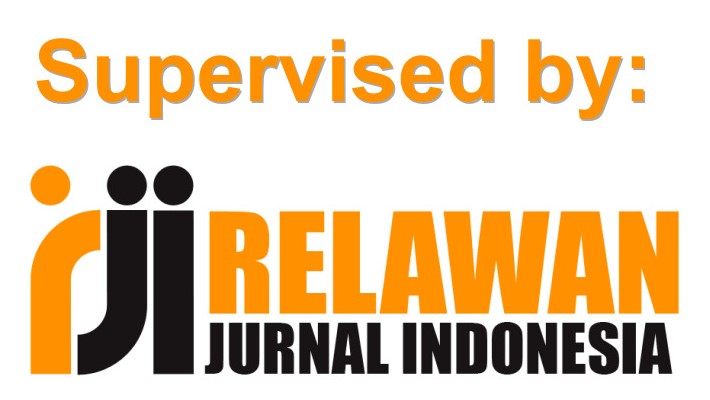Augmented Reality in E-Commerce: A Conceptual Exploration of Product Uncertainty and Customer Engagement
DOI:
https://doi.org/10.56127/ijst.v4i2.2077Keywords:
Augmented Reality; Product Uncertainty; Customer Engagement; E-Commerce; Conceptual Framework; Immersive Technology; Trust; Literature ReviewAbstract
The growth of e-commerce has redefined consumer expectations, yet it continues to grapple with key limitations such as product uncertainty and insufficient customer engagement. Augmented Reality (AR) has emerged as a promising technological innovation, offering immersive product visualization that enhances consumer interaction and confidence in online shopping. This study provides a conceptual exploration of AR’s role in mitigating product-related uncertainty while simultaneously promoting deeper customer engagement within e-commerce platforms. Employing a systematic literature-based approach, the study synthesizes findings from peer-reviewed research across marketing, human-computer interaction, and information systems. The analysis identifies how AR reduces different dimensions of uncertainty—such as appearance, fit, and functional ambiguity—and outlines the psychological mechanisms, including trust formation and perceived interactivity, that mediate user responses. Furthermore, the study highlights the conditions under which AR fosters cognitive and emotional engagement, with implications for interface design and strategic technology adoption. This conceptual synthesis offers both theoretical insights and practical guidelines for e-commerce platforms considering AR integration. It also proposes a research agenda to empirically validate the conceptual model and expand understanding of AR’s long-term impact on consumer behavior.
References
Brodie, R. J., Hollebeek, L. D., Juric, B., & Ilic, A. (2011). Customer engagement: Conceptual domain, fundamental propositions, and implications for research. Journal of Service Research, 14(3), 252–271. https://doi.org/10.1177/1094670511411703
Csikszentmihalyi, M. (1990). Flow: The psychology of optimal experience. Harper & Row.
Daft, R. L., & Lengel, R. H. (1986). Organizational information requirements, media richness and structural design. Management Science, 32(5), 554–571. https://doi.org/10.1287/mnsc.32.5.554
Davis, F. D. (1989). Perceived usefulness, perceived ease of use, and user acceptance of information technology. MIS Quarterly, 13(3), 319–340. https://doi.org/10.2307/249008
De Ruyter, K., Hilken, T., Chylinski, M., et al. (2020). Touching the untouchable: Exploring multi-sensory augmented reality in the context of online retailing. Journal of Retailing, 96(4), 472–487. https://doi.org/10.1016/j.jretai.2020.04.008
Flavián, C., Ibáñez-Sánchez, S., & Orús, C. (2019). The impact of virtual, augmented and mixed reality technologies on the customer experience. Journal of Business Research, 100, 547–560. https://doi.org/10.1016/j.jbusres.2018.10.050
Hilken, T., De Ruyter, K., Chylinski, M., & Mahr, D. (2017). Augmenting the eye of the beholder: Exploring the strategic potential of augmented reality to enhance online service experiences. Journal of the Academy of Marketing Science, 45(6), 884–905. https://doi.org/10.1007/s11747-017-0541-x
Hollebeek, L. D. (2011). Demystifying customer brand engagement: Exploring the loyalty nexus. Journal of Marketing Management, 27(7–8), 785–807. https://doi.org/10.1080/0267257X.2010.500132
Javornik, A. (2016). Augmented reality: Research agenda for studying the impact of its media characteristics on consumer behaviour. Journal of Retailing and Consumer Services, 30, 252–261. https://doi.org/10.1016/j.jretconser.2016.02.004
Kim, H., & Forsythe, S. (2008). Adoption of virtual try-on technology for online apparel shopping. Journal of Interactive Marketing, 22(2), 45–59. https://doi.org/10.1002/dir.20111
Lou, Y., & Xie, J. (2009). Product uncertainty and consumer choice. Journal of Consumer Research, 36(3), 624–634. https://doi.org/10.1086/598614
MacInnis, D. J. (2011). A framework for conceptual contributions in marketing. Journal of Marketing, 75(4), 136–154. https://doi.org/10.1509/jmkg.75.4.136
Mollen, A., & Wilson, H. (2010). Engagement, telepresence and interactivity in online consumer experience: Reconciling scholastic and managerial perspectives. Journal of Business Research, 63(9–10), 919–925. https://doi.org/10.1016/j.jbusres.2009.05.014
Pantano, E., & Pizzi, G. (2020). Forecasting artificial intelligence on online customer assistance: Evidence from chatbot patents analysis. Journal of Retailing and Consumer Services, 55, 102096. https://doi.org/10.1016/j.jretconser.2020.102096
Poushneh, A., & Vasquez-Parraga, A. Z. (2017). Discernible impact of augmented reality on retail customer’s experience, satisfaction and willingness to buy. Journal of Retailing and Consumer Services, 34, 229–234. https://doi.org/10.1016/j.jretconser.2016.10.005
Scholz, J., & Smith, A. N. (2016). Augmented reality: Designing immersive experiences that maximize consumer engagement. Business Horizons, 59(2), 149–161. https://doi.org/10.1016/j.bushor.2015.10.003
Verhagen, T., Vonkeman, C., Feldberg, F., & Verhagen, H. (2019). Presenting online recommendations: The role of psychological distance and personalization. International Journal of Human-Computer Studies, 122, 44–58. https://doi.org/10.1016/j.ijhcs.2018.08.007
Vivek, S. D., Beatty, S. E., & Morgan, R. M. (2012). Customer engagement: Exploring customer relationships beyond purchase. Journal of Marketing Theory and Practice, 20(2), 122–146. https://doi.org/10.2753/MTP1069-6679200201
Downloads
Published
How to Cite
Issue
Section
License
Copyright (c) 2025 Hari Setiabudi Husni, Michelle Alicia Lynch, William Leo Walangitan, Aaron Kennedy

This work is licensed under a Creative Commons Attribution-ShareAlike 4.0 International License.















